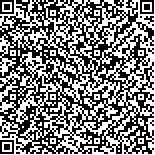何泽佳,恽晓萍,宋桂芸,等.脑卒中患者踝关节本体感觉的差异性研究[J].中华物理医学与康复杂志,2023,45(7):604-608
扫码阅读全文

|
| 脑卒中患者踝关节本体感觉的差异性研究 |
|
| |
| DOI:10.3760/cma.j.issn.0254-1424.2023.07.005 |
| 中文关键词: 本体感觉 振动觉 位置觉 运动觉 脑卒中 |
| 英文关键词: Proprioception Vibration sensing Position sensing Kinaesthesia Stroke |
| 基金项目:中国康复研究中心青年基金课题(No.2019zx-Q3) |
|
| 摘要点击次数: 4376 |
| 全文下载次数: 4311 |
| 中文摘要: |
| 目的 探讨脑卒中患者在不同本体感觉测试下踝关节振动觉、位置觉及运动觉的差异。 方法 选取存在本体感觉障碍的脑卒中患者28例(患者组)和健康志愿者22例(正常组),其中患者组按照卒中侧别,分为右侧脑卒中组(10例)和左侧脑卒中组(18组)。对患者组的健侧及患侧、正常组的优势侧及非优势侧,先后进行振动觉阈值测试、被动关节角度重置测试、主动关节角度重置测试、运动最小阈值测试,分析并比较健康志愿者与脑卒中患者之间、脑卒中患者患侧与健侧之间、左侧脑卒中患者与右侧脑卒中患者之间的本体感觉差异。 结果 患者组患侧振动觉阈值[(28.91±22.53)μm],跖屈15°[(5.49±5.39)°]和背伸5°[(4.48±3.89)°]的被动位置觉绝对差值,跖屈15°[(5.23±4.34)°]、跖屈30°[(3.26±1.73)°]和背伸5°[(4.97±3.48)°]的主动位置觉绝对差值,跖屈20°[(11.21±15.57)°]、跖屈10°[(7.47±8.40)°]和中立位0°[(5.63±6.32)°]的运动觉阈值,均显著高于正常组(P<0.05)。患者组健侧振动觉阈值[(5.90±4.98)μm],跖屈15°的被动位置觉绝对差值[(3.75±2.04)°],跖屈15°的主动位置觉绝对差值[(3.32±1.84)°],跖屈20°[(1.75±1.25)°]、跖屈10°[(1.55±1.01)°]和中立位0°[(1.38±0.98)°]的运动觉阈值,均显著高于正常组(P<0.05)。与左侧脑卒中组比较,右侧脑卒中组背伸5°的被动位置觉绝对差值[(8.52±5.13)°]较大(P<0.05)。 结论 脑卒中患者患侧踝关节的振动觉、位置觉及运动觉均有不同程度的损害,其中以振动觉及运动觉损害相对较明显。脑卒中后健侧踝关节的振动觉、位置觉及运动觉也有轻度损害。右侧大脑半球损伤相对于左侧大脑半球损伤所致的本体感觉障碍可能更为严重。 |
| 英文摘要: |
| Objective To explore vibration, position and motion proprioception of the ankle joints after a stroke. Methods Twenty-eight stroke survivors with impaired ankle proprioception were divided into a right-side stroke group (n=18) and a left-side stroke group (n=8). Twenty-two healthy volunteers constituted a control group. Vibration perception thresholds, passive and active joint angle resetting, and motion minimum thresholds were quantified among the stroke survivors on both the healthy and the affected side. With the controls the dominant and non-dominant sides were used. The differences in proprioception between the healthy volunteers and the stroke patients, between the affected side and the healthy side of the stroke patients, and between left- and right-side stroke patients were analyzed and compared. Results Among the stroke survivors the vibration perception threshold on the affected side averaged (28.91±22.53)μm. The absolute difference in the perception of passive positioning was (5.49±5.39)° for 15° of plantar flexion and (4.48±3.89)° for 5° of dorsal extension. In active positioning plantar flexion was (5.23±4.34)° and for 30° of plantar flexion it was (3.26±1.73)°. The 5° dorsal extension error was (4.97±3.48)°. The motion perception thresholds between 20° of plantar flexion, 10° of plantar flexion and the neutral position were significantly higher, on average, than among the control group. The stroke group also had significantly higher motion perception thresholds than the control group. Conclusion The vibration, position, and motion sense of the ankle joint on a stroke survivor′s affected side tend to be impaired, with the impairment of vibration and motion sensing tend to be more substantial. After stroke, there is also mild impairment of vibration, position and motion sensing in the healthy ankle joint. The impairment of proprioception caused by right cerebral hemisphere injury may be more serious than that caused by injury on the left. |
|
查看全文
查看/发表评论 下载PDF阅读器 |
| 关闭 |
|
|
|